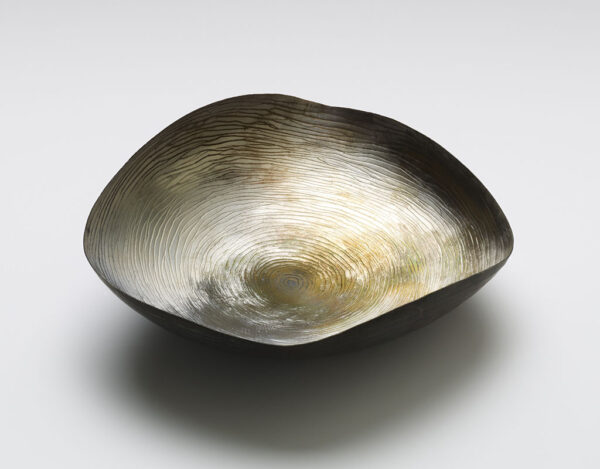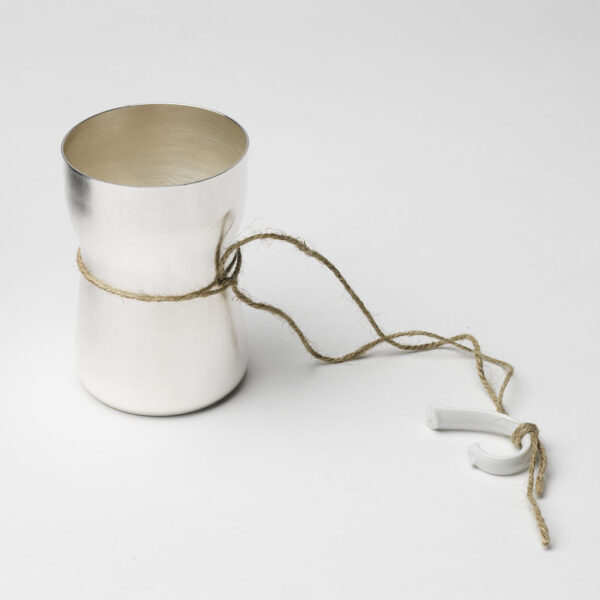WORK – HOLLOWWARE
In the early 90’s when I started silversmithing, making hollowware was the high end of the craft. It could be hot-chocolate jugs, carafes, coffee pots whatever, but mostly the pieces seemed to effuse the spirit of a bye gone era. The work was concerned with creating clean perfectly even surfaces, soldered joints were long, difficult and invisible. Challenging, exciting, but of absolutely no interest to me with too many rights and too many wrongs.
A decade later I travelled to Laos as part of a development project and became absorbed in the work produced by local metal smiths. Working in thin copper sheet which they formed into large ceremonial bowls by an intensive process of applied pattern, the pattern sustained the shape of the bowl where polishing becomes a secondary concern. Suddenly the stages of making weren’t so separated as I was used to, this rekindled my interest in hollowware by presenting a number of new possibilities.
I developed a method of using a small steel ball similar in size to a ball point pen in a process not unlike doodling. Working on thin silver sheet I’d use, in some cases, a random pattern which gave rise to a skin like texture, in other a more structured pattern, circles or lines radiating from the centre of the sheet. This manner of working gave the silver strength, volume and decoration and allowed me to create shape by applying pattern in the same way I’d seen used by the metal smiths of Loas.









